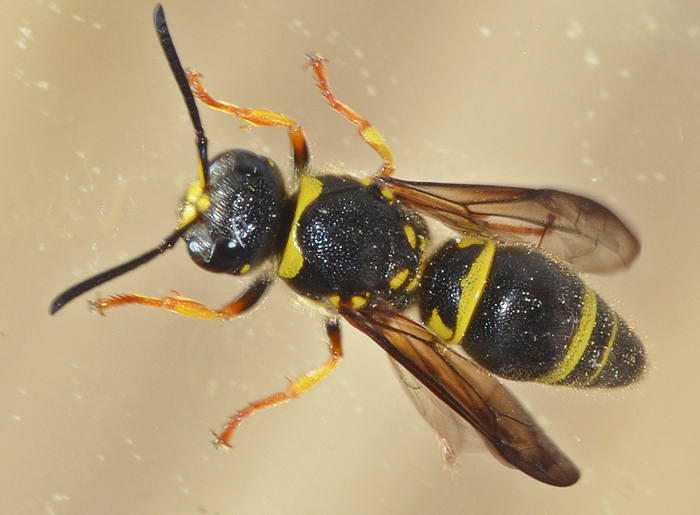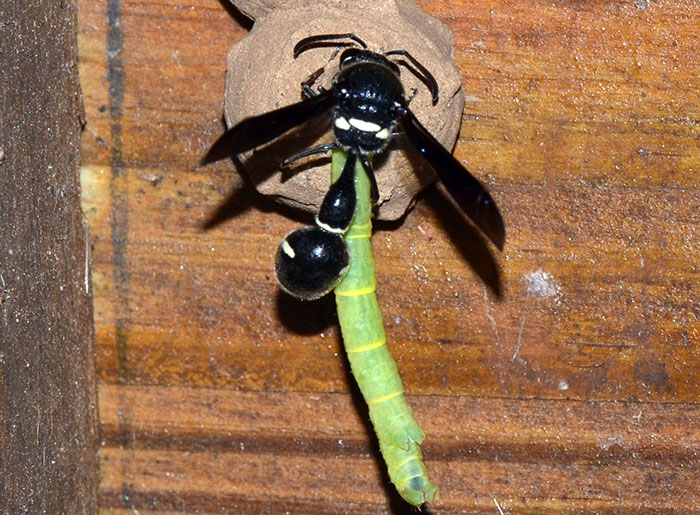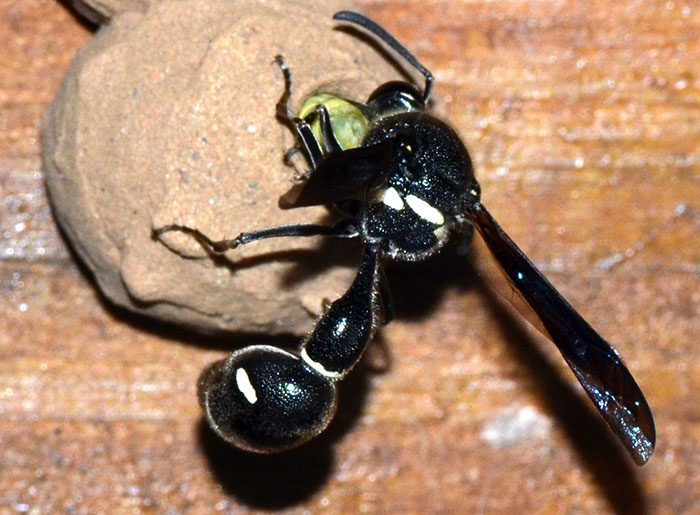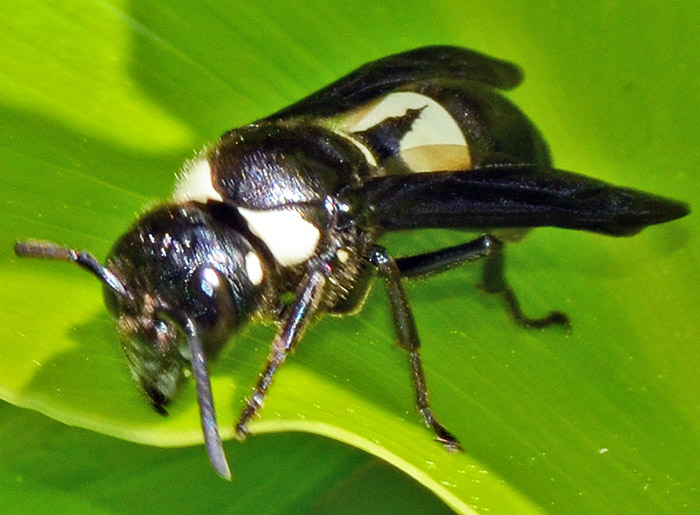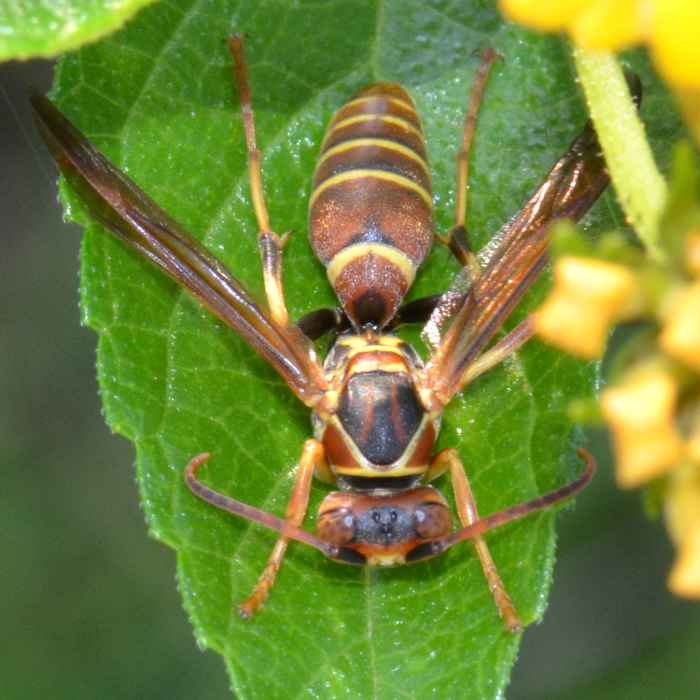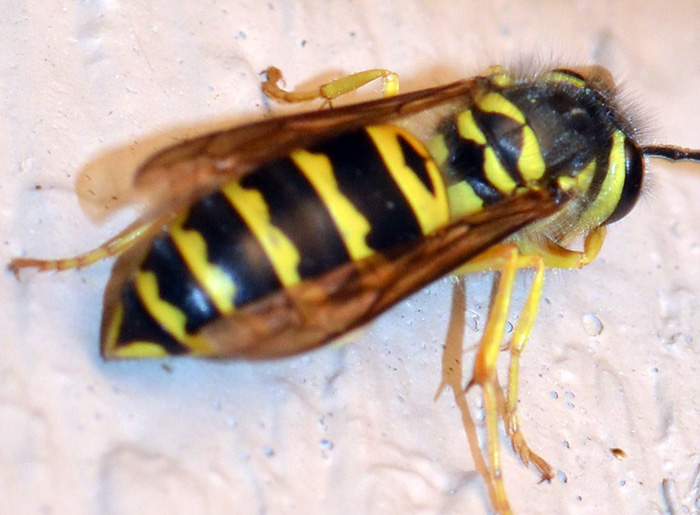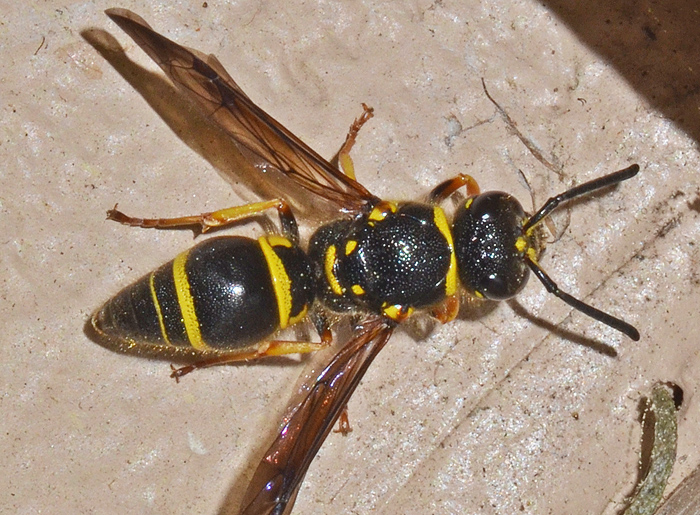 Ancistrocerus campestris. | Look at this smiley face--one happy wasp. A. unifasciatus and A. lutonidus are very similar sister species. The small photo shows a different specimen (09/04/16 at 1 pm).
bug guide (this photo): http://bugguide.net/node/view/1206691 | ||
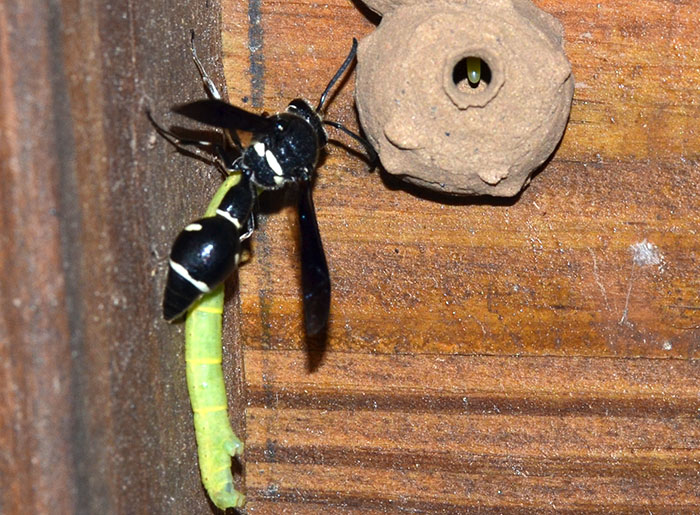 Eumens fraternus (Potter Wasp). | The common Potter Wasp (Eumenes fraternus) builds small spherical mud nests and provisions each with a caterpillar etc. after laying a single egg. This egg can be seen on the photo. I was quite surprised by the size of the Geometridae caterpillar which the wasp stuffed into the nest. The process took about 20 seconds. The prepupal instar overwinters in the mud pots built by the last generation of females.
bug guide (this sequence): https://bugguide.net/node/view/1573997 wikipedia: http://en.wikipedia.org/wiki/Potter_wasp | ||
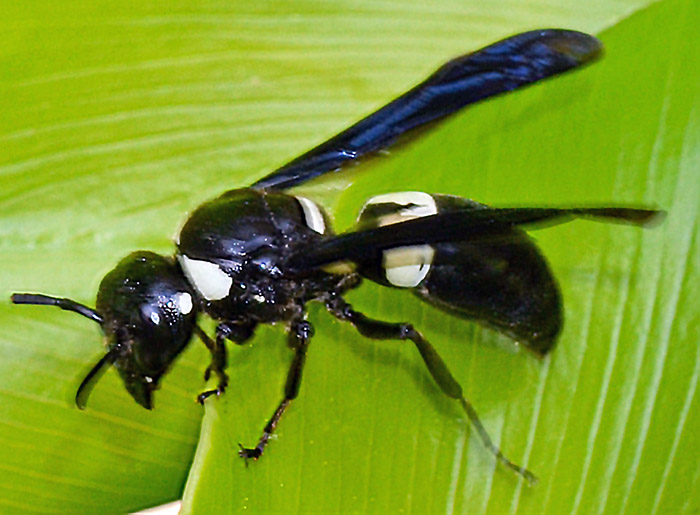 Euodynerus bidens (Mason Mimic Wasp) ♀. | Very similar to the much more common true Mason Wasp (Monobia quadridens). However, this species here has two large, white patches on the sides of the propodeum (the first abdominal segment), whereas Monobia has no or only a small spot. In addition, the white spots on the "temples" are distinctive too. Too bad that the photos didn't turn out better but it was a windy day and the wasp didn't give me much time.
bug guide (these photos): https://bugguide.net/node/view/1509572 | ||
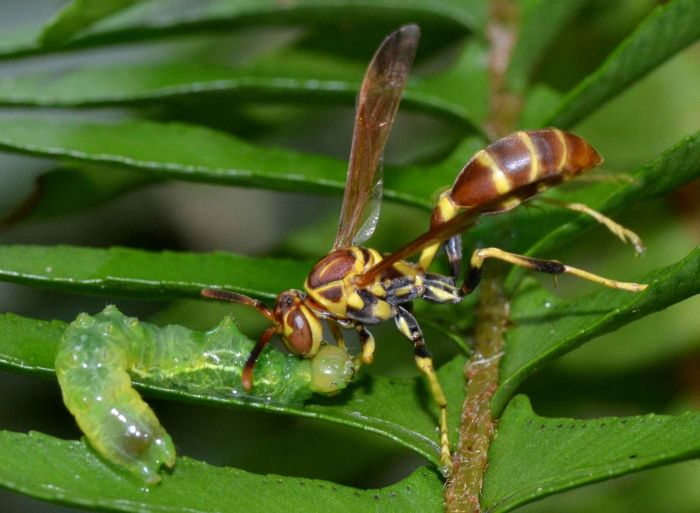 Mischocyttarus mexicanus cubicola (Paper Wasp). | A 'paper wasp' interacting with another neighbor in my yard. This wasp is Mischocyttarus mexicanus cubicola. It is a close relative of the wasps in the Polistes genus. bug guide (this photo): http://bugguide.net/node/view/549560 | ||
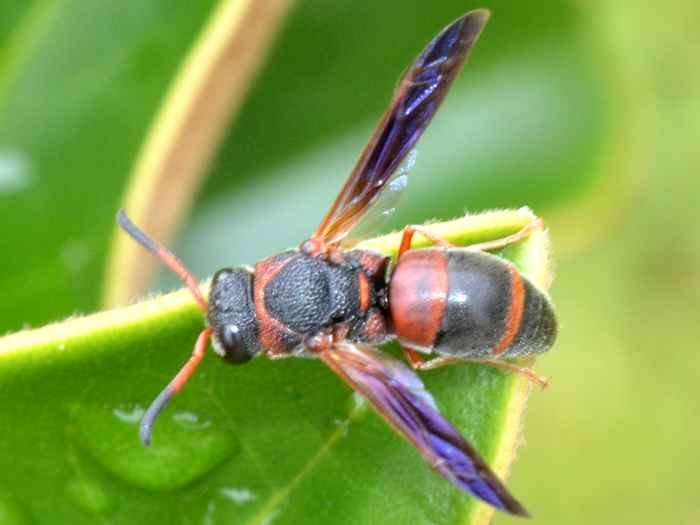 Pachodynerus erynnis (Red-Marked Pachodynerus). | I believe this specimen belongs to the Potter and Mason Wasps. Probably the Red-Banded Mason Wasp Pachodynerus erynnis. This wasp is common in the Southeastern US and often builds nests under the siding boards of buildings. bug guide (this photo): http://bugguide.net/node/view/572049 Texas A&M: http://alturl.com/5kdfk | ||
 Polistes metricus (Paper Wasp). | That's a pretty big 'paper wasp' cleaning its antennae on a jasmine leave. There are sooo many wasps and bees but it really looks like Polistes metricus. Males and females have yellow and red/brown faces, respectively. So this one is likely a gal. Only the females sting.
They mainly feed on caterpillars, which surprises me because I haven't found any recently. They have an interesting life cycle as described on the wikipedia page. bug guide: http://bugguide.net/node/view/60264 wikipedia: http://en.wikipedia.org/wiki/Polistes Texas A&M: http://insects.tamu.edu/fieldguide/cimg348.html | ||
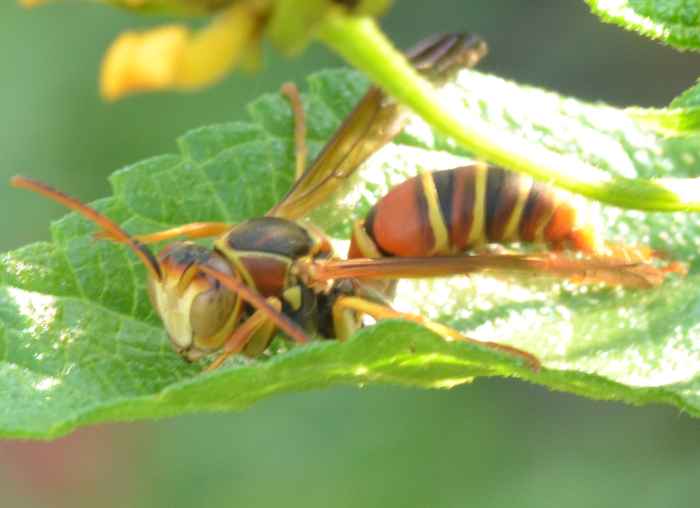 Polistes dorsalis (Paper Wasp (nonspecific)). | This colorful paper wasp is Polistes dorsalis resting(?) on a lantana leave. The genus has 18 or 19 species in the US and Canada. So I have still a few to go.
bug guide (these photos): http://bugguide.net/node/view/569239 | ||
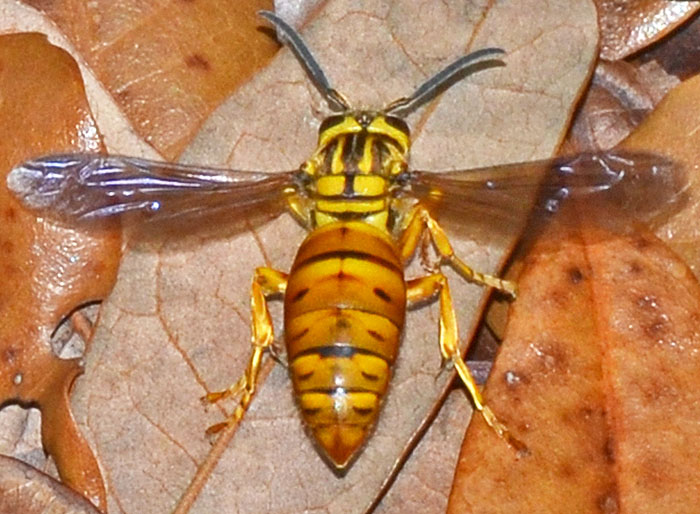 Vespula squamosa (Southern Yellowjacket). | The southern yellowjacket can be identified by its distinctive black and yellow patterns. This one is likely a queen (see UF link, Fig. 2). They create enormous, multiple-comb nests. One of the largest reported nests was 114 cm (45") in diameter. Their stings are venomous causing pain and workers can sting several times. On the upside, they also destroy many insects that otherwise attack cultivated and ornamental plants. bug guide (this photo): http://bugguide.net/node/view/1368650 wikipedia: https://en.wikipedia.org/wiki/Vespula_squamosa UF: http://edis.ifas.ufl.edu/in238 | ||
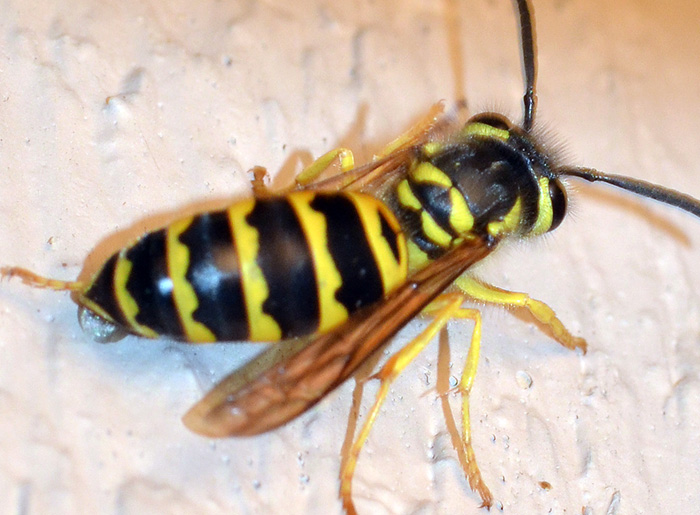 Vespula maculifrons (Eastern Yellowjacket). | Eastern yellowjackets aggressively defend their hives from threats and are known to inflict painful stings. Their colonies are normally subterranean, but sometimes at ground level in fallen logs or on buildings. In late summer, workers construct special larger cells to rear new queens. Males develop from unfertilized eggs and mate with the new queens, which then leave the natal colony to hibernate. The old colony declines and all remaining individuals perish.
bug guide (these photos): https://bugguide.net/node/view/1734206 |

